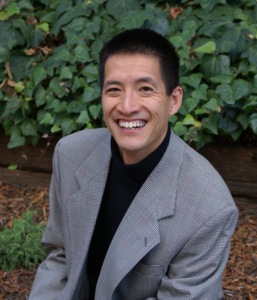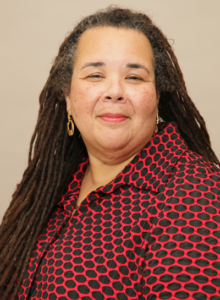teaching for transformation
Select an item by clicking its checkbox

Comparative Theology in the Millennial Classroom: Hybrid Identities, Negotiated Boundaries
Date Reviewed: September 17, 2016
his is the fourth in the Routledge Research in Religion and Education series. The series editor provides a Foreword distinguishing between religious education as formation within religious institutions and the concern of the series, which is education about religion. In this context, the essays address comparative theology as a process and as a pedagogical method in primarily, though not exclusively, undergraduate classrooms.
Editors Brecht and Locklin provide a concise, effective introduction which establishes an overview of the intersecting thematic components of the collection: comparative theology, particularly the “departure-and-return” model as developed by Francis X. Clooney, SJ., and ways in which the digital culture of the millennial generation impacts epistemology and identity.
The fifteen essays are arranged in three sections. The well-placed first essay, by Judith Gruber, offers a postcolonial critique of the comparative theological model as implicitly essentialist. Essays in the second group address issues of identity raised by millennials and the nature of the millennial classroom in relation to comparative theology. Essays in the third section discuss hands-on examples and specific pedagogical practices. An afterword by Clooney, in which he identifies “six recurring issues” which he finds in the essays and addresses sequentially, concludes the volume. Clooney’s frankly personal account of his own context in developing the departure-and-return model and his rejoinder to the charge of essentialism bring the dialogue to a fitting end.
The diversity of the collection is rich in both content and authorial voices, some of whom are well-established scholars and others of whom are emerging, most teaching in religious studies or theology departments at public or private North American universities, though the balance leans toward Roman Catholic institutional affiliations.
Editors Brecht and Locklin note that this collection is the fruit of a Wabash Center teaching workshop. The robust range of reflection invites readers into the feel of a working group of teacher/scholars who share a concern for facilitating transformative learning in the religion or theology classroom, yet who address this concern and comparative theology’s relevance to the millennial context in quite distinct ways. A brief sampling demonstrates the range of perspectives authors develop: soteriological privilege (Brecht); Muslim theology of tawhid (Hussain); embodiment and material culture (Gasson-Gardner and Smith); storytelling as a pedagogical method of African Traditional Religions (Aihiokhai); comparing dharma and moksha, works and faith, ethics and spirituality (Yadlapati); a voluntary female Jewish-Muslim textual study group (Golberg); and use of film in an online context (Sydnor).
As Jeanine Hill Fletcher writes in her essay, “the work of the comparative theology classroom shares in this important work of shaping citizens in a multifaith world toward tolerance, appreciation, meaningful relationships, and the common good” (149). The same may also be said for religious studies classrooms. Many teachers of religion who are neither theologians nor comparativists by academic training will nevertheless find this collection useful and even inspiring for their pedagogical reflection and practice.

Critical Approaches to the Study of Higher Education: A Practical Introduction
Date Reviewed: July 15, 2016
The goal of the contributors to Critical Approaches to the Study of Higher Education is to apply critical theories to the study of higher education which, they insist, “has only begun to develop research using such essential approaches as critical feminist theories, critical race theories, critical discourse analysis, state theoretical approaches, or theories of power and marginalization.” Added to this genuine concern is the scarcity of published material “addressing key topics in higher education that are central to critical work elsewhere in the social sciences” (5). To meet this need, they marshal “critical theories, models, and research tools with a critical vision of the central challenges facing postsecondary researchers” hoping to shape future “scholars and scholarship in higher education” (5). They are convinced that these critical tools will “provide policymakers, the public, and institutional actors clear, reasonable, and authoritative information about higher education as it is experienced in a democracy” (1). The result is a fine compilation of well-written essays for teachers and researchers to adopt and exercise their critical edge with a view to innovating their teaching pedagogies and research.
The vision Mertínez-Ahlemán, Pusser, and Bensimon have is to ensure a sustained exercise of critical theory in the service of humanity, namely “for understanding politics and policy making in higher education” (5). They carry their readers through fifteen intriguing arguments critically testing theory against lived experiences filled with autobiographical elements that share the same thread – an abiding concern and determination to ensure that justice and equity are exercised in higher education. After all, critical theory came into being for this purpose as exemplified in feminist criticism, critical race theory, and other critical studies dealing with various dimensions of human life such as marginalization, economic disparity, and power differential. Simply stated, things are not the way they seem and something must be done even if it might be subversive.
This volume is, indeed, “long overdue” (5) as it provides salient insights on how to critically navigate the host of complex and challenging issues facing higher education. These dynamic tensions inherent in higher education include: areas of scholarship and lived experience, power differential, critical historiography, the making of globalization, policymaking, race, equity, opportunities, and institutional change, and so on. Quite frankly, this book is a gem with a delicate vision to motivate scholars and teachers alike to engage in the noble – yet difficult – task of effecting change, especially the kind of transformation that advocates justice and nurtures equity in higher education. Educators and researchers may strive to embody and diligently exercise its content in their classrooms or writing projects because of its timely and urgent call for action. In other words, justice and equity matter (311).
“You are now entering the real world.” This is undoubtedly one of the most popular remarks that college/university graduates hear around the time of their commencement ceremony. The comment implies, of course, that life on campus is a kind of artificial existence, since, just to give one example, there ...
The proximity of violence is the terror. Violence is not new – it is, for much of our society and in many, many ways, a preferred way of life. The illusion is that violence can be controlled, patrolled, contained, and then “utilized” when needed – like a genie in and out of ...
Regardless of how many times pedagogical guru Parker Palmer is asked, he refuses to comply. Dr. Palmer, in his writings, speeches, and workshops, resists reducing the mystical adventure of critically reflective teaching to “tips, tricks, and techniques.” While I agree wholeheartedly, I also know that what interests, challenges, or touches ...

